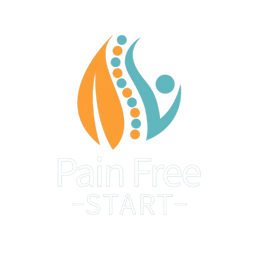Introduction
Rheumatoid arthritis (RA) is a chronic inflammatory disease that causes joint pain, stiffness, and swelling. It can also lead to issues with the eyes and skin problems. While exercising with RA can be challenging, research shows that physical activity can help manage symptoms and improve overall health. In this article, we’ll explore the benefits of exercise for RA, the limitations to keep in mind and share my top tips for success when planning an exercise program.
Benefits of Exercise for Rheumatoid Arthritis (RA)
Reduces Inflammation
Exercise can help reduce inflammation in the body, a key driver of RA symptoms. Regular physical activity can lower the levels of C-reactive protein (CRP), a marker of inflammation in the body.
Improves Joint Function
Exercise helps maintain joint flexibility and range of motion, essential for people with RA who may experience stiffness and limited mobility. Weight-bearing exercises, such as walking or strength training, can also help build bone density and prevent osteoporosis, a risk factor for people with RA. My pain-free body program is ideal for building strength, flexibility, and improving posture, core strength, and balance. It is gentle and suitable for people with RA.
Reduces Pain and Fatigue
Exercise improves muscle strength and endurance, which can reduce pain and fatigue for people with RA. Low-impact activities such as swimming, cycling, or yoga can be particularly beneficial as they do not stress the joints as much as high-impact activities like running or jumping.
Improves Mental Health
Exercise can improve mood and reduce stress and anxiety, commonly seen in people with RA. Regular physical activity increases the release of endorphins, natural mood-boosting chemicals in the brain.

Limitations to Exercise in Rheumatoid Arthritis (RA)
Joint Damage
People with RA may have joint damage or instability, making certain exercises unsafe or uncomfortable. Avoid activities that put too much pressure on the joints, such as running or high-impact aerobics. Build strength and stability around your joints with my pain-free body program.
Inflammation
RA sufferers may experience periods of increased inflammation, making it difficult to exercise. During these periods, rest and avoid strenuous activity until the inflammation subsides.
Fatigue
Fatigue can make it difficult for people with RA to stick to an exercise routine. Listen to your body and rest when needed. Learn to pace yourself and maintain a consistent exercise routine to build strength and endurance over time. Be kind to yourself. For tips on the importance of rest and how to get a good sleep then this blog may help.
Other Medical Conditions
People with RA may have other medical conditions that limit their ability to exercise. Always talk to your healthcare provider before starting any new exercise program, especially if you have other medical conditions or take medications that may affect your ability to exercise safely.
7 Top Tips for Success with Exercise
1. Choose low-impact activities
Opt for exercises like swimming, cycling, or walking that are gentler on your joints.
2. Warm up and stretch
Always warm up before exercising and stretch afterwards to reduce stiffness.
3. Focus on flexibility
Include activities like yoga or tai chi to improve flexibility and range of motion. This blog might be a nice place to start.
4. Pace yourself
Listen to your body and take breaks when needed, especially if you feel fatigued or experience pain.
5. Shorter sessions
Break your routine into shorter, more frequent sessions to avoid overexertion.
6. Create Multiple Plans
For people with complex conditions like RA, where capabilities and symptoms change daily and sometimes hourly, it’s crucial to have more than one exercise program/plan. Otherwise, on days when you’re struggling and can’t achieve your ideal workout, you might feel like you’ve failed and give up, or push yourself and risk a flare-up of pain and symptoms.
- Plan A: For good days, aim for your ideal workout. Just bear in mind if you go too big you may pay the price later. Learn what your body is able to tolerate. Sadly, it may not be the same as a few months or years ago.
- Plan B: A scaled-down version of Plan A for days when you’re not feeling as great.
- Plan C: For days when just getting through the day is an achievement.
By having various plans, you can manage your symptoms and maintain a sense of achievement, even on tough days. This approach keeps you moving forward, building a better-functioning body, and maintaining motivation.
7. Work With A Physiotherapist
A professional can help design a personalised exercise plan tailored to your condition for safe, effective workouts. You may want to consider someone who specialises in Rheumatology, however, there are few and far between. However, we all have knowledge of how to help and support those of you with inflammatory conditions. The Chartered Society Of Physiotherapists has a list which may help. Find out how I can help here.
Conclusion
Exercise can be a valuable tool in managing symptoms and improving overall health for people with RA. By incorporating low-impact activities and working with an experienced healthcare professional, you can develop a variety of safe and effective exercises, giving you options even on tough days. My FREE posture program, along with this advice, is a great place to start. This approach allows you to experience the many benefits of physical activity while minimising the risks of further joint damage or inflammation.
Take care,
Helen Manders BSc (Hons) MCSP HCPC
Chartered Physiotherapist Since 2001




